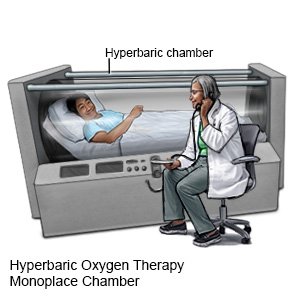Toxic Epidermal Necrolysis
Medically reviewed by Drugs.com. Last updated on Aug 4, 2025.
Toxic epidermal necrolysis (TEN) is a rare skin condition that causes you to lose your outer layer of skin. It may look like a second-degree burn. You may lose 30% of your skin or more.
WHILE YOU ARE HERE:
Informed consent
is a legal document that explains the tests, treatments, or procedures that you may need. Informed consent means you understand what will be done and can make decisions about what you want. You give your permission when you sign the consent form. You can have someone sign this form for you if you are not able to sign it. You have the right to understand your medical care in words you know. Before you sign the consent form, understand the risks and benefits of what will be done. Make sure all your questions are answered.
IV:
An IV is a small tube placed in your vein that is used to give you medicine or liquids.
Foley catheter:
A Foley catheter is a tube put into your bladder to drain urine into a bag. Keep the bag below your waist. This will prevent urine from flowing back into your bladder and causing an infection or other problems. Keep the tube free of kinks so the urine will drain properly. Do not pull on the catheter. This can cause pain and bleeding, and may cause the catheter to come out. Healthcare providers will remove the catheter as soon as possible to help prevent infection.
Nasogastric tube:
A nasogastric (NG) tube is put into your nose and down into your stomach. Food or medicine may be given through your NG tube. This helps your mouth rest and heal.
Heat:
Healthcare providers will apply heat, such as a warm blanket, to keep your body temperature normal. TEN may cause a low body temperature because of skin loss.
Mouth care:
Healthcare providers will use a sponge or soft toothbrush to clean your mouth. You may also need to rinse your mouth with a medicated mouthwash. Healthcare providers will give you petroleum jelly to put on your lips to decrease pain and help them heal.
Monitoring:
- Telemetry is continuous monitoring of your heart rhythm. Sticky pads placed on your skin connect to an EKG machine that records your heart rhythm.
- Healthcare providers will measure how much liquid you get and urinate. If you get up to use the bathroom, ask healthcare providers if they need to measure your urine or bowel movement before you flush the toilet.
Medicines:
- Pain medicine will be given to decrease pain. Do not wait until the pain is severe before you ask for more medicine.
- Antibiotics may be given to treat or prevent an infection caused by bacteria. It may be given as a pill, cream applied to your skin, or eye drops.
- Antihistamines may be given to decrease itching.
- Immune globulins are medicines to strengthen your immune system.
Tests:
- Blood tests will show dehydration, inflammation, and organ function.
- A chest x-ray may be needed to check your lung and heart function.
- A wound culture may be collected from an open sore and tested for infection.
Treatment:
- Hydrotherapy is water therapy done in a whirlpool. It helps clean your wounds and removes dead tissue to prevent infection.
- Hyperbaric oxygen therapy is used to give your skin and tissues extra oxygen. You will be placed in a chamber and oxygen will be given under pressure. Ask for more information about this therapy.

- Physical therapy may be needed. A physical therapist teaches you exercises to help improve movement and strength, and to decrease pain.
- Plasmapheresis is a procedure used to take plasma (the fluid part of blood) from your blood cells and replace it with clean plasma. This is done to clean toxins out of your blood that may have caused the TEN.
- Surgery may be needed if your skin does not heal properly. You may need any of the following:
- Debridement is done to clean and remove dirt or dead tissues from the injured area.
- A skin graft is when a healthy piece of skin is taken from one area of the body and attached to the injured area. Donor skin (from another person) may also be used.
- Wound care with medicated bandages may be needed. These bandages will not stick to your painful skin. The bandages will protect your skin and help it heal.
Treatment options
The following list of medications are related to or used in the treatment of this condition.
RISKS:
You may develop scarring and skin color changes. You may lose your hair and nails. You may have long-term vision problems. Without treatment, you may have dehydration, infection, or blindness. Your organs may fail, which is life-threatening.
CARE AGREEMENT:
You have the right to help plan your care. Learn about your health condition and how it may be treated. Discuss treatment options with your healthcare providers to decide what care you want to receive. You always have the right to refuse treatment.© Copyright Merative 2025 Information is for End User's use only and may not be sold, redistributed or otherwise used for commercial purposes.
The above information is an educational aid only. It is not intended as medical advice for individual conditions or treatments. Talk to your doctor, nurse or pharmacist before following any medical regimen to see if it is safe and effective for you.
Learn more about Toxic Epidermal Necrolysis
Treatment options
Care guides
Further information
Always consult your healthcare provider to ensure the information displayed on this page applies to your personal circumstances.
